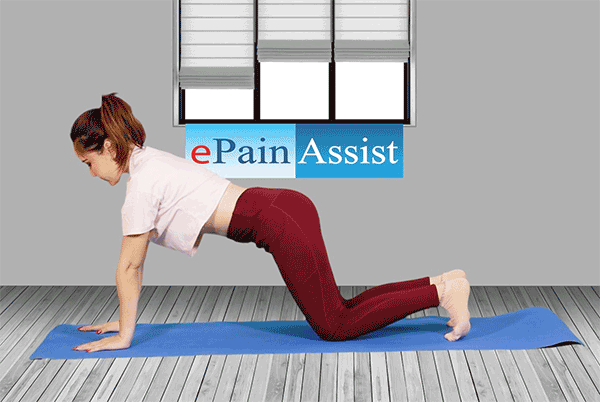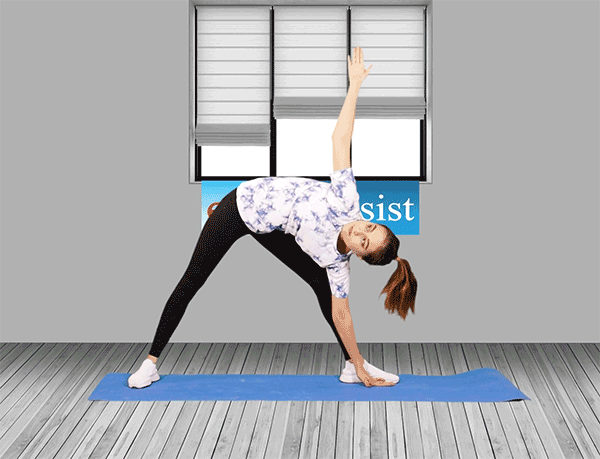Home Remedies for Coccygodynia or Coccygeal Pain
Coccygodynia or coccygeal pain can often be extremely hurting and impairing the strength and vitality. So, sometimes home remedies handle the situation very well. It leads to no further annoyance to coccyx. The home remedies that are suggested for coccygodynia or coccygeal pain are:

- Never apply any direct weight to the tailbone. To keep it safe, never sit on hard surfaces for long time. If you sit on, change the side of buttocks frequently.
- Apply ice 4 times a day to the tailbone areas for about 15-20 minutes, if there are any injuries.
- One of the best home remedies is to avoid sitting down on hard surfaces for long periods of time if you are suffering from coccygodynia or coccygeal pain. When on hard surfaces, alternate sitting on each side of the buttocks. Also, lean forward and direct weight away from the tailbone.
- Another effective home remedy for Coccygodynia or coccygeal pain is to use nonsteroidal anti-inflammatory drugs (NSAID), such as, Ibuprofen (Advil) to control pain.
- Purchase a cushion with hole in the middle (doughnut) to sit on to prevent the tailbone from getting in touch with the surface. The coccyx area remains safe.
- Take fiber rich foods to make stools softer and pass up constipation that might worsen the hurting in the coccyx area.
- Massage is the best home remedy for Coccygodynia or coccygeal pain. Get a massage from professional therapists to alleviate strained muscles. Let the massage therapist know about pain before they start working for you.
Exercises for Coccygodynia or Coccygeal Pain
Kegel Exercises for Coccygodynia or Coccygeal Pain
One of the most effective ways to deal with coccygodynia or coccygeal pain is pelvic floor exercises or Kegal exercises. (This exercise is especially applicable for the new moms who have given child birth very recently. The coccyx is stressed abnormally during the pregnancy and delivery process.) The pain associated with Coccygodynia can be best controlled by Kegel exercises because it toughens the pelvic floor muscles that hold the uterus. The controlling of the flow of urine is also helpful for performing the exercises.
Doing so, you are just stressing the pelvic floor muscles to be contracted for making them stronger. As suggested, you need to perform the exercises without compressing, without having to squeeze the gluteal muscles together with the thighs. Indeed the kegel exercises relieve coccygodynia or coccygeal pain.
Stomach Exercises for Coccygodynia or Coccygeal Pain
A few abdominal exercises are very effective to fix the problem of coccygodynia or coccygeal pain. It is easily done by lying on your back on the floor and bending your knees to your abdomen to contract the muscles. Continue the abdominal contraction for a second, and then loosen up again. Repeat it 5 to 10 times.
Weightless Squats Exercise for Coccygodynia or Coccygeal Pain
Weightless squats exercise for coccygodynia or coccygeal pain helps in building strength of muscles and help to bring balance to your body. Repeated squats in order to reduce or ease the pain in the tailbone.
Treadmill Workouts for Coccygodynia or Coccygeal Pain
Treadmill workouts for coccygodynia or coccygeal pain will aid in relieving pain. Few patients feel comfortable with walking and running on a treadmill for a few minutes regularly. These workouts will relieve coccygodynia or coccygeal pain.

Clamshell Exercise for Coccygodynia or Coccygeal Pain
Clamshell exercise for coccygodynia or coccygeal pain is a fantastic exercise to activate the functionality of the pelvis or hip muscles. It plays a most important role to relieve pain in the lower back and coccygodynia or coccygeal pain.
Yoga Asanas / Poses for Coccygodynia or Coccygeal Pain
Yoga asanas/poses can give a long term solution for coccygodynia or coccygeal pain. Take yoga sessions under the guidance of professional expert after you are completely recovered from coccygodynia or coccygeal pain. Before you start yoga, relax your body and mind by taking a 20 minute break.
Consult your doctor prior to yoga classes and ask him/ her if you are ready for these sessions.
- Shalabasana or The locust posture

- Bhujangasana or The cobra pose

- Ardha Salabhasana or The half locust pose
- Balasana or Child’s pose

- Adho Mukha Svanasana or The downward facing dog pose

- The triangle pose or Trikonasana

- Shavasana or Corpse Pose.

Recovery Period for Coccygodynia or Coccygeal Pain
The recovery from coccygodynia or coccygeal pain depends on the root cause of the problem time takes time to recover. So, the recovery period varies from one patient to another. Simple coccygodynia or coccygeal pain will be gone in a month. Chronic coccygodynia or coccygeal pain will need proper treatment and lifestyle changes to relieve the pain. So the recovery period/ healing time depends on many factors like age of the person, severity of the coccygodynia or coccygeal pain, if there is a tumor etc… Following the treatment plan suggested by the specialists will help in faster recovery.
Prognosis of Coccygodynia or Coccygeal Pain
Majority of cases of coccygodynia or coccygeal pain that are caused by injury are improved within a number of weeks if right medical treatment in hospital and self-care are taken at home. However, the prediction of the development of coccygodynia or coccygeal pain eventually depends on multiple factors:
- If coccygodynia or coccygeal pain is the effect of tumor or trauma, or infection.
- If it is due to the rigorousness of the injury like fracture, or a bruise, or dislocation.
- If the patient will be able to fulfill with therapeutic treatment.
- If the patient will be able to heal and recuperate.
If people suffer from chronic coccygodynia or coccygeal pain in spite of right medical treatment, it is extremely frustrating and devastating.
Coping and Lifestyle Changes for Coccygodynia or Coccygeal Pain
The problem of coccygodynia or coccygeal pain is that it aggravates while sitting. So, the solution to the problem is not to sit on it. Instead, finding a relaxed position during every activity is helpful. Whether it is walking, standing, leaning, kneeling, squatting or laying the coccyx should be taken care of. But, we can never do without these activities. Can you stand up all the time when you go out for a meal with your friend? So, coccygodynia or coccygeal pain impairs the social life. Follow the ideas. Here are some ideas to help:
- Change positions: Always change the position while standing, sitting or kneeling. Else you might cause another pains. Use a device to keep records of the time.
- Lean forward: While sitting tries to lean forward in your seat. It may lessen the pain. Having a right height table to rest your arms will help. Take care to avoid back strain.
- Lean to one side: Majority of people finds that taking weight on one side of the buttock reduces the weight on the coccyx and minimizes the coccygodynia or coccygeal pain. If you do it, never do it in excess. It will cause damage of the back and will create pain there.
- Find comfortable clothes: Some of the tight clothes like tight skinny jeans turn the problem worse. Wear loose, comfortable garments that will keep the lower part in safe that do not squeeze your bottom together are the most comfortable.
- Sleeping: People with the trouble of coccygodynia or coccygeal pain feel comfortable sleeping on the sides or in front. Also you can sleep with a cushion or pillow between the knees. Try sleeping with a pillow or cushion between your knees.
Prevention of Coccygodynia or Coccygeal Pain
Almost all of the coccygodynia or coccygeal pain causing injuries are in fact accidental, so they cannot be prevented. If you are in extreme sports, wearing proper protective gear will help in preventing injuries which leads to coccygodynia or coccygeal pain.
Also Read:
